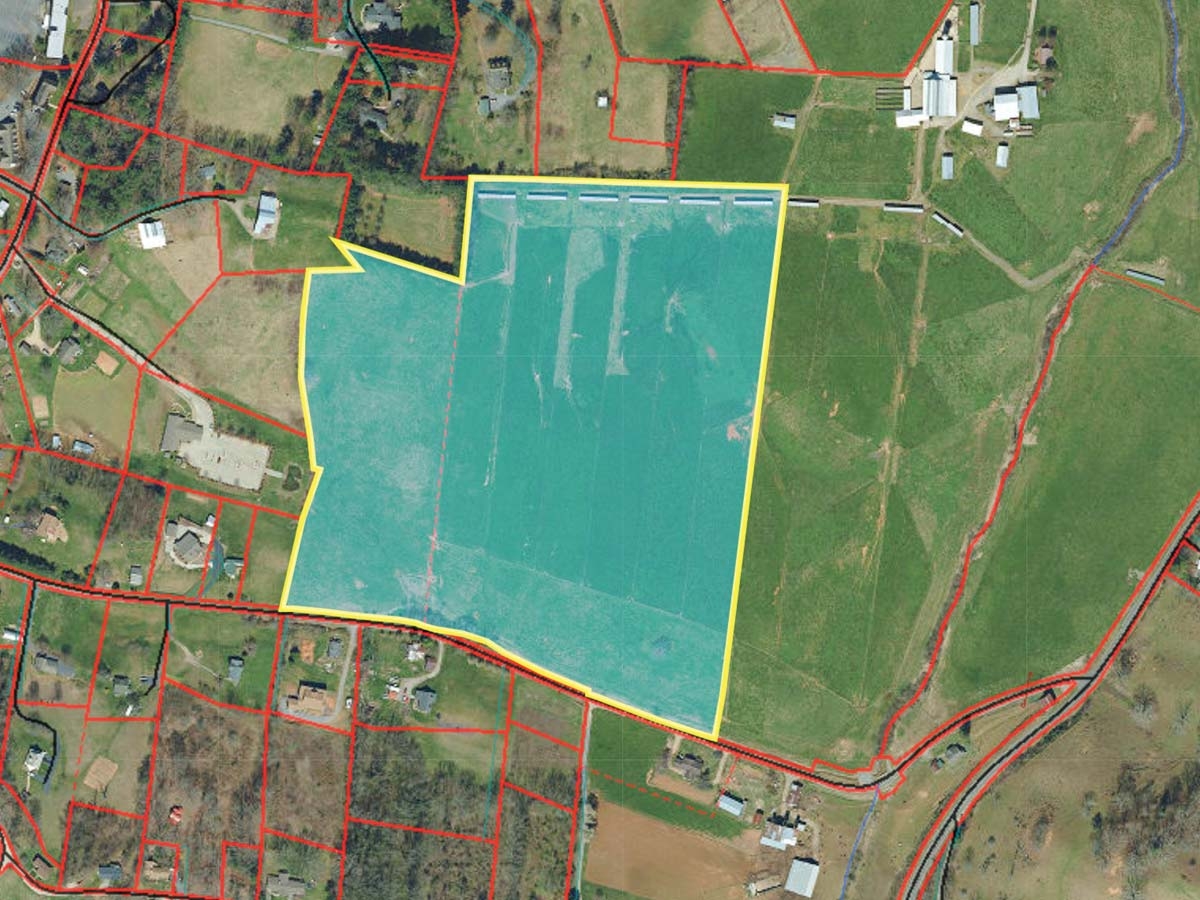Proposed Waynesville subdivision meets stiff initial resistance
 A proposed subdivision would include 115 units just north of Sunnyside Road, if approved. Haywood GIS photo
A proposed subdivision would include 115 units just north of Sunnyside Road, if approved. Haywood GIS photo
The seemingly endless conflict between preservation and development in Waynesville — specifically, badly needed housing — entered a new chapter as a proposal for a major subdivision in Waynesville was met with outcry by neighbors who cite sprawl, density and greed as reasons to oppose it.
“This is the largest [subdivision] I’ve seen during my time in Waynesville,” said Development Services Director Elizabeth Teague during a meeting of the Waynesville planning board Sept. 20.
Located just north of Sunnyside Road between Racoon Road and East Street, the 32-acre parcel owned by John M. Queen is slated for 115 single family homes.
Due to a change in state law, the proposed subdivision is the first in Waynesville to go through a process of administrative review, rather than a quasi-judicial proceeding. That means the planning board will no longer approve a master site plan through a process that may be subjective, but instead will objectively consider whether or not the preliminary plat is compliant with the town’s land development standards.
The parcel lies within the town’s extraterritorial jurisdiction. When Queen Development LLC applies for connection to the town’s sewer system, it will also have to apply for formal annexation into the town.
Currently, zoning places the parcel in the Racoon Creek Neighborhood Residential District, which calls for medium density residential development at 3.5 units per acre. Plans submitted by Patrick Bradshaw of Civil Design Concepts show lot sizes ranging from around 7,200 square feet on up to 13,000 square feet. The smallest lots have a width of 60 feet, exceeding the minimum 50-foot width called for in town ordinances. Setbacks will be verified through the building permit process.
Related Items
The civic space requirement calls for 5 percent of the total development to be dedicated to such areas, and that 25 percent of that should be for active recreation, like volleyball courts, pavilions and the like. The proposal appears to meet those criteria.
The plans, however, left much to the imagination and many issues unresolved. Several of the streets exceed the 500-foot block length standard, although the planning board has the authority to approve them anyway. If the board chooses not to, the developer would have to remove several parcels to make way for a cross street or greenway.
The developer will also need to submit a compliant landscaping plan, as well as demonstrate compliance with driveway spacing stipulations.
Teague said street lighting would have to be “very sensitively done” to ensure light pollution doesn’t leak out into the surrounding area.
If approved, the development would likely necessitate improvements to Sunnyside Road by the North Carolina Department of Transportation. Sight lines out of the subdivision looking either direction on Sunnyside are also problematic due to the curvy, hilly nature of the road.
The lone entrance/exit onto Sunnyside from the development directly opposes a private driveway; Bradshaw said that was intentional, because offset driveways are a safety hazard.
The lone entrance also promises problems for emergency vehicles that need secondary access to the development. If an agreement can’t be worked out with adjoining property owners, the developer would again have to reduce the number of units in the subdivision to make way for another road.
An NCDOT traffic study says that in 2019, average daily traffic count on Sunnyside was 350 cars a day, and that a new development of the type proposed by Queen would generate about 800 trips per day.
Despite the deficiencies in the plan, Bradshaw, advocating for Queen, said he thought the addition of inventory to a red-hot housing market would soften some of these price points on other properties.
The required public hearing on the project drew a full house to the Sept. 20 meeting, which began at 5:30 p.m.
Many of those in attendance were incensed that they’d been made to sit through several other unrelated planning board agenda items — none of which generated any public comment — to comment on the Sunnyside project, which was the last item on the agenda and didn’t start until almost two hours after the meeting began.
When the presentations by Teague and Bradshaw culminated, it was nearly 8 p.m., and Chair Susan Teas Smith proposed a continuance before what promised to be a lengthy public comment session could begin. The room erupted.
Many in the audience were out of order with their comments at that time, prompting board Vice Chair Ginger Hain to address them directly.
“What we’d like to do is bring back a much better formed packet to you,” Hain said. “This is very rough and we’re very uncomfortable.”
Attendees cajoled Smith into letting the meeting continue, something Bradshaw said he’d have no problem with, stating that since he’d already heard the concerns of the planning board, he also wanted to hear the concerns of residents so as to better inform the plan he brings back to the board in the future.
Seven members of the audience spoke during the public comment session, all opposed to the plan.
Kimberly Turner Mathis, of Sunnyside Road, took issue with the meaning of “density,” saying the 115-lot development didn’t feel like low to medium density. Another Sunnyside Road property owner, Preston Jacobsen, echoed that sentiment.
Others voiced concern over the traffic situation, or flood runoff, but former planning board member Jason Rogers, who lives on nearby Counsel Place, said that the development was the “very meaning of urban sprawl” and that it didn’t comply with the town’s development standards. Rogers’ wife, Charlotte, said she wanted to “protect Waynesville from becoming another overcrowded Asheville.”
The Waynesville Planning Board will meet again on Oct. 18 and likely hear from the developer, as well as concerned residents. At that point, the board could approve the plan as-is, with changes, or not at all. Any form of planning board approval would have to go through the Waynesville board of aldermen after that, for final approval.









